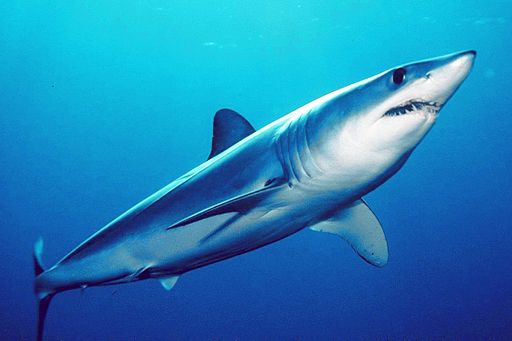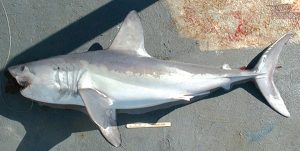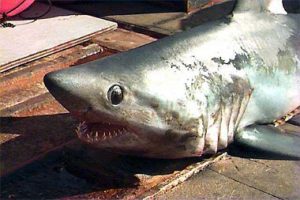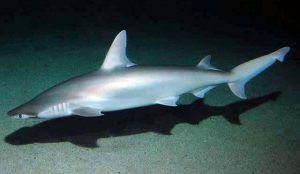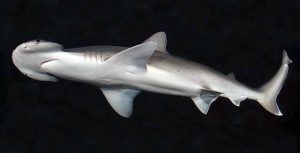Maine Seafood Guide – Shark
Season
Status
Regulatory Authority
Harvest Method
Recreational Harvest
Health Benefits & Risks
Buying & Preparing
Brands
Certifications
Links
►Species Description
Shortfin mako Isurus oxyrinchus
Porbeagle Lamna nasus
Thresher Alopias vulpinus
Smooth dogfish Mustelus canis canis
Spiny dogfish
Blue shark Prionace glauca
Bonnethead Sphyrna tiburo
Smooth hammerhead Sphyrna zygaena
See gallery below
Wild.
Some 23 species of shark inhabit the Gulf of Maine for all or part of the year. Of these, only a handful are harvested commercially and recreationally for seafood.
Some sharks caught as bycatch in other fisheries may be exported for oil, sent to fish meal processing plants, or sold for meat in the US and abroad.
►Season
Summer, when many sharks from warm, southern waters stray into the Gulf of Maine.
►Status
In May 2008, the Atlantic States Marine Fisheries Commission adopted an Interstate Fishery Management Plan for Atlantic Coastal Sharks to complement federal management actions and increase protection of pregnant females and juveniles in inshore nursery areas. The plan regulates 40 different species of coastal sharks found on the Atlantic coast. According to the latest National Marine Fisheries Service stock status report, the following species have overfishing/overfished status:
Blacknose shark is overfished, overfishing is occurring.
Dusky shark is overfished, overfishing is occurring.
Scalloped hammerhead is overfished, overfishing is occurring.
Porbeagle is overfished; overfishing is no longer occurring.
Sandbar shark is overfished; overfishing is no longer occurring.
►Regulatory Authority
Atlantic States Marine Fisheries Commission.
►Harvest Method
Hook and line, also caught as bycatch in trawl and gillnet fisheries. See the vessel and gear guide for more information.
►Recreational Harvest
Sportfishing is allowed from a vessel with a required Federal Highly Migratory Species (HMS) angling permit. It is prohibited to take coastal sharks in Maine’s territorial waters. The minimum size is 54 inches, straight fork length, one shark per vessel.
For permits and current fishing regulations visit the National Marine Fisheries Service Permit Shop or call 1-888-872-8862.
►Health Benefits & Risks
Shark is a good source of vitamin B12, selenium and omega-3 fatty acids.
![]() Sharks are large, long-lived species at the top of the food chain, and thus contain elevated levels of mercury. There is a consumption advisory for shark due to contamination from mercury, PCBs, dioxin, and other chemicals. The State of Maine recommends that pregnant and nursing women, women who may get pregnant, nursing mothers and children under eight years old not eat any shark. Everyone else should limit shark to twice a month.
Sharks are large, long-lived species at the top of the food chain, and thus contain elevated levels of mercury. There is a consumption advisory for shark due to contamination from mercury, PCBs, dioxin, and other chemicals. The State of Maine recommends that pregnant and nursing women, women who may get pregnant, nursing mothers and children under eight years old not eat any shark. Everyone else should limit shark to twice a month.
►Buying & Preparing
Shark “steaks” sold in retail outlets may not indicate the species or whether the fish was caught by Maine fishermen or landed in Maine. Unless your market or restaurant obtains fish directly from local fishermen, it may be difficult to determine the species or origin.
►Companies, Brands, and Labels
►Certifications & Verifications
►Links
- NOAA Fisheries Species Directory

